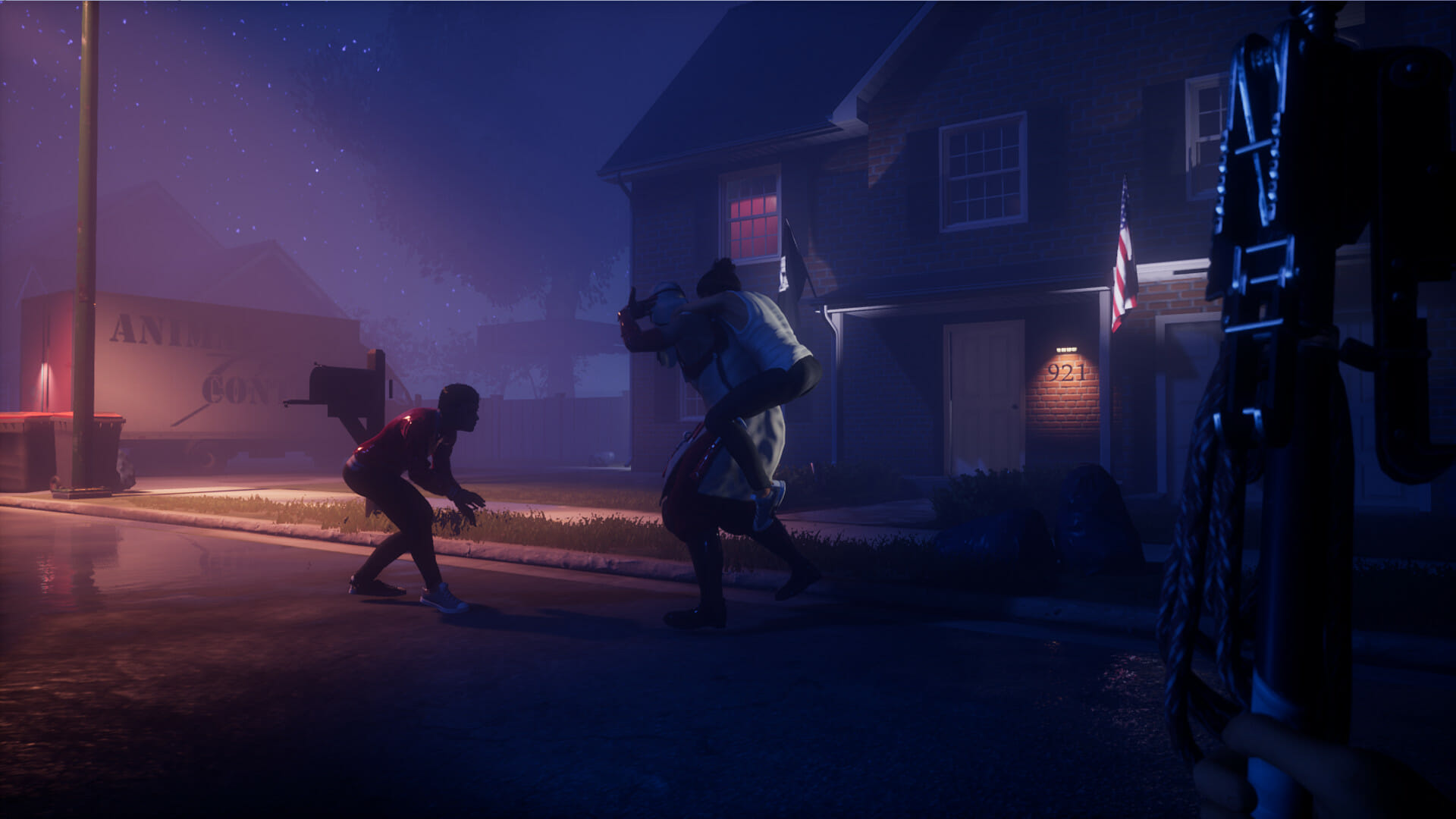If you’re a fan of stealth games, in the past few weeks you may have heard some buzz about The Blackout Club, the sophomore title from developer Question Games. Set to debut on PC, PlayStation 4 and Xbox One sometime this year, the game explores elements of light stealth in a co-op setting and sets it against the mythos of childhood fantasy and small town sci-fi horror. Still in its nascent development stages, it is also currently available in early access, and as new features are being added and implemented, the developers have asked for feedback on its systems. So, curious about the building hype, I checked in with The Blackout Club to see what the fuss was about, and came away intrigued about what’s to come.
In The Blackout Club, you play as the teenage resident of a quiet town where everything is not as it appears. The kids in the neighborhood are suffering from strange amnesiac episodes at night, and as evidence emerges of a conspiracy, it’s up to them to document evidence and fight back against their mind-controlled parents while evading the mysterious Stalker, a boogeyman who can only be seen when they close their eyes. Gameplay wise, it’s the open world zombie playground next door; when the player is dropped into a public or private game, they are placed in a neighborhood full of darkened houses and are given one of several possible procedurally-generated objectives, from collecting sensitive files to rescuing captives hidden in the passages beneath the houses. Weapons, at least for now, are light; you can choose between a grappling hook, a stun gun or a crossbow, and sometimes a few assist or healing items like bandages and flashbangs can be collected during the level. Not only must you finish your tasks by stealthing your way through the streets and houses, occasionally engaging in light hand-to-hand combat, but you must avoid alerting the Stalker, who hunts down players individually and, upon capture, puts them into a sleeping zombie-like state. As you play, experience points are awarded based on how and if certain missions or side goals are completed, opening up new combat, evasion and documentation powers (for taking down adult-zombies or recording their crimes) to offer more strategic options. A recent update even allows you to play as the Stalker in other people’s games, reminding me of the Versus mode of Left 4 Dead.
Having played a few hours of The Blackout Club so far, I like what I’m seeing. I play a lot of horror and stealth games in general, and though I expected to see a lot of conventions retread here, I was pleasantly surprised to find an experience that is not immediately easy to adapt to. What aspects are conventional (like the color coded eye icon of the system’s detection meter) seemed to be used sparingly while providing a familiarity that acts as a vital frame of reference for players to anchor onto. It’s a good balance—I’m not completely lost, but I’m not over-confident about my abilities yet, either, and for now, that’s a good place to be. I like creeping around backyards and hopping fences like an alley cat and grappling onto the rooftops. It definitely evokes the giddy, secret thrill of being a kid sneaking out after dark.
It also challenges how boring stealth games can get by adding the unpredictability of other players. It’s one thing to memorize enemy spawns and pathing patterns; it’s quite another to have to adjust for players who might make a mistake or get caught. Since each mission cannot be finished until all players have assembled at the exit station, there’s an additional incentive to look out for each other and go back for anyone who has been left behind (which happens often, due to how easy it is to get caught by the Stalker). The game might not be strictly considered stealth per se, but as someone who prefers to use evasion tactics for as long as possible, I appreciate this added difficulty factor. It’s even better with all the little child-like flourishes (for example, if a teammate tries to “revive” you after a Stalker has put you under mind control, your character runs away and starts to tattle). It reminds me a bit of Sleep Tight, actually. The games are very different genre-wise but both of them turn common childhood fantasies and nightmares into a playable experience, and I love that.
My one complaint is that, like all stealth games, there’s a bit of a learning curve to The Blackout Club, and online co-op games aren’t the best environment to figure that all out. While the game’s prologue does a good job of setting up the core premise, it also doesn’t necessarily walk you through the nuances and finer points of gameplay in a cumulative and comprehensive way. Trying to get the basics of each objective was all but impossible while in a game with experienced players, and it didn’t feel great dragging my teammates down. But that strikes me as something that will be addressed before release.
As development wears on, I anticipate we’ll see the addition of more enemy types (maybe locations and weapons too?), and I look forward to how they will shape the game. Until then I intend to keep playing, and hopefully get a major head start above the other players before The Blackout Club’s official release.
Holly Green is the assistant editor of Paste Games and a reporter and semiprofessional photographer. She is also the author of Fry Scores: An Unofficial Guide To Video Game Grub. You can find her work at Gamasutra, Polygon, Unwinnable, and other videogame news publications.
